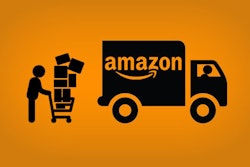As the B2B market evolves and as modern-day price setting becomes increasingly complex for many B2B industry leaders, it’s important to understand the factors contributing to downward pricing pressures, one of the most notable being globalization.
Today, globalization is largely to blame for destructive price environments, which occur when increased competition causes disruption and damage to any part of an industry or sector. But what was the global exchange like before and where did the concept of globalization come from?
The history of humanity is a history of commerce – a history of global trade in fact. While some researchers focus on the modern era, multi-state commerce dates to ancient civilizations, with lucrative trade in natural resources and agricultural products between far-flung locations from India to Egypt, China and the Roman Empire, among others.
Later came the industrial revolution – countries were no longer limited to the production of natural resources – but could manufacture goods – and sometimes the same goods as other countries. Taxes on imports were the norm as each country sought to protect domestic industry. Our current-day approach to global trade has roots in the development of the 1934 Reciprocal Trade Agreements that effectively shifted the U.S. and most foreign markets away from placing tariffs on imported and exported goods, seeking instead to encourage a multi-national commercial interdependency that encouraged commerce and discouraged conflict – who wants to fight with their customer!?
The forces of globalization have continued to evolve, as manufacturing continuously shifts to lowest-cost labor markets, fostering significant change in the modern era of business and one of the biggest effects is pricing pressure. The type of downward pricing pressure caused by globalization occurs as multiple competitors in an industry bring forward the cheapest offering to gain larger market share. Globalization is undoubtedly a contributing factor to the downward pricing pressure placed on U.S. manufacturers, but other byproducts of offshoring create additional downward pressures as well.
Commoditization’s role in pricing pressure
The issue of market share can also be traced specifically to commoditization. In fact, globalization plays a major role in commoditization because it allows goods to be created by an infinite, worldwide market. Another contributing factor to commoditization is the issue of product patents. As patents expire at an increasing rate each year, competitors are free to replicate and offer the same intellectual property once unique to a specific business. Many of the businesses losing product patents were initial founders and innovators in their respective spaces. But as patent protections expire or competitors become aware of a lucrative market, competitors spring up, claiming market share and creating downward pressure on margins; forcing once-high-margin businesses to have a new focus on costs and improve pricing approaches to maximize margin in a now more-competitive marketplace. Additionally, later entrants to a market often operate in highly saturated competitive markets, accept lower margins (maybe MUCH lower) and as a result, destructive pricing becomes an issue. To avoid commoditization and maintain differentiation in the global competitive environment, these originating businesses should invest profits into research so new solutions can continue to be developed to maintain the brand. From there, smarter and more effective pricing can make navigating highly competitive and saturated markets easier, given that many purchasers will be drawn to low priced product options.
Taking a strategic approach to pricing
In fact, businesses can combat the destructive pricing environments that results from increased competition and globalization by implementing a more strategic pricing approach. This method provides businesses with the ability to maximize profit by providing visibility to pricing sensitivity – allowing you to maximize price in every transaction. What exactly does a strategic pricing approach entail? First, it entails applying artificial intelligence (AI) to a company’s data and puts the company expert in the driver’s seat to lend strategic direction to the technology. When a customer has hundreds of thousands of product SKUs, leveraging historical data to understand their response to past price changes is key to developing and evolving a strategic pricing approach.
More specifically, one way to leverage a company’s data and glean actionable insights is by introducing price optimization software. This type of tool can help companies understand their business and customers, price smarter, and ultimately win more business and market share. Price optimization also provides the opportunity to nurture and build upon existing customer relationships by demonstrating true value through top and bottom line growth.
As the global B2B pricing model continues to evolve, companies will be faced with more pressure and disruption than ever before. Having a plan of action in place for dealing with competition, low cost alternatives and downward pricing pressures will be key. Creating a strategy for smarter, more effective pricing now will pay off tremendously down the road, as companies look to hold on to market share and their pricing power.
Rick Chappel is the VP of Customer Success at Zilliant, where he leads the global customer success group, ensuring that Zilliant customers get the greatest long-term benefit from Zilliant’s solutions and innovations, while maintaining high customer satisfaction and retention. For more than 20 years, Rick has helped his customers use technology to deliver enhanced business results.























